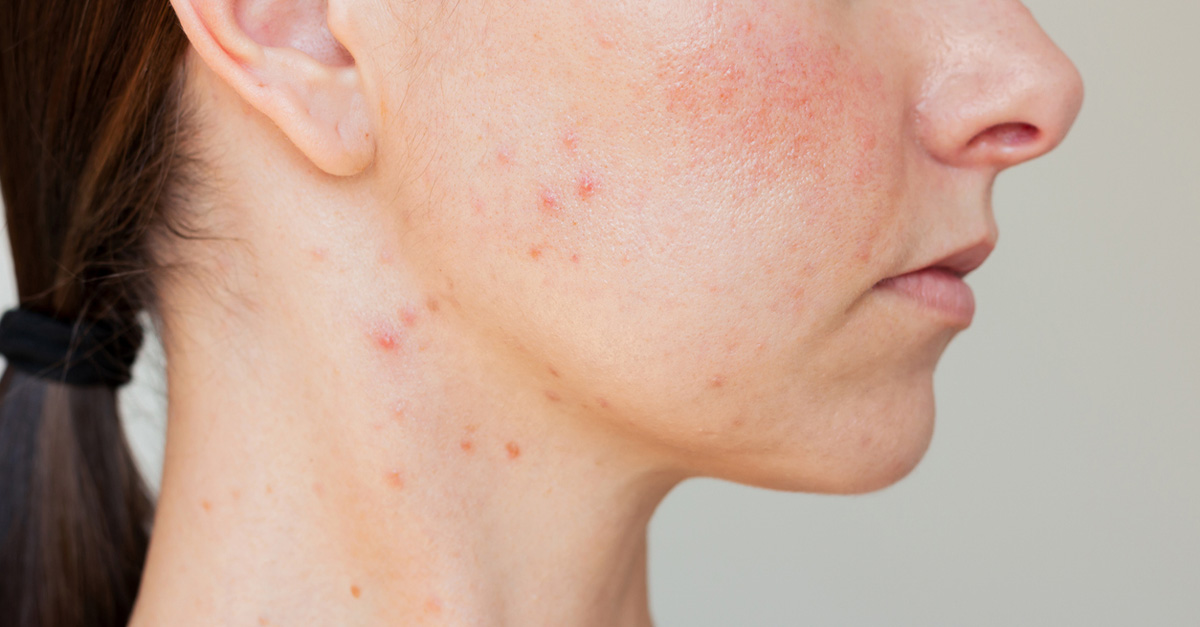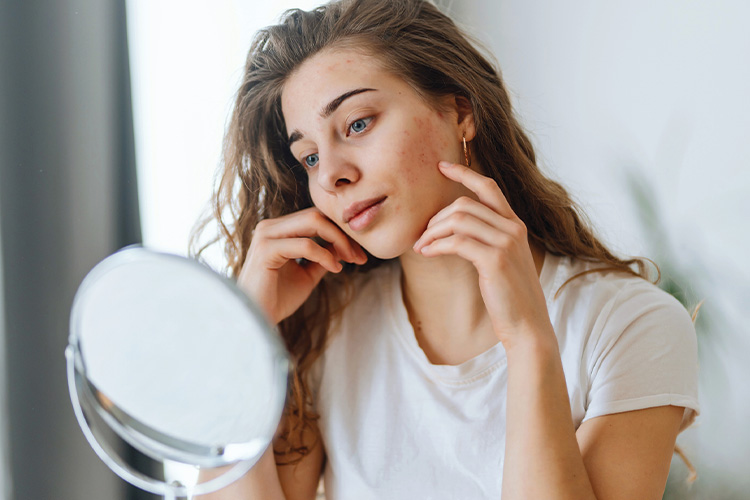The skin condition rosacea gets its name from its most recognizable symptom: Persistent facial flushing that can appear rosy, red, violet, or even brown. But the condition is more than just skin deep. It can also bring on visible blood vessels, bumps, irritation, and a general sensitivity that makes your skin feel uncomfortable. While the definite cause is unknown, providers and patients alike have noticed that certain everyday habits or environmental factors can make it worse.
The good news? Identifying your personal rosacea triggers is a great first step in keeping flare-ups under control and feeling more confident in your skin.
What Is Rosacea?
Both men and women are affected by rosacea and usually begins with the tendency to blush more easily. That redness can slowly spread beyond the cheeks and nose to the forehead, chin, ears, chest, and back. Additionally, rosacea can manifest as visible blood vessels, breakouts that resemble acne, thickening skin with a bumpy texture, reddened, irritated eyes, and swollen eyelids.
Rosacea has a widespread effect on Americans. While approximately 16 million people in the U.S. suffer from the disorder, it’s not fully understood. A definitive answer regarding what causes rosacea remains unknown, but common factors often act as triggers.
Rosacea Triggers
The National Rosacea Society (NRS), a nonprofit working to raise awareness, encourage and support medical research, says potential rosacea triggers can vary greatly depending on the individual. Triggers themselves, they say, could in fact be endless.
However, the organization surveyed 1,066 rosacea patients and found many common factors.
Sun Exposure
What is the biggest trigger for rosacea? According to the survey, 81% of those polled cited sun exposure. To avoid a rosacea flare-up, protect your skin as much as you can. When going outside, apply sunscreen regularly. Choose a sunscreen that protects against both UVA and UVB solar rays. Stick with a sunscreen formula designed for sensitive skin. Wear a wide-brimmed hat and sunglasses, spend time in the shade, and avoid peak sunlight hours, if possible.
Emotional Stress
At 79%, emotional stress trails just behind sun exposure on the NRS survey. Through research, the organization found that many rosacea sufferers were able to reduce the number of flare-ups that occurred through the use of stress management techniques. Yoga, meditation, a regular fitness routine, healthy and nutritious eating habits, and adequate sleep are suggested methods to alleviate stress.
Hot Weather
Warm temperatures trigger rosacea flare-ups in 75% of those surveyed. Combat hot and humid days by seeking refuge in an air-conditioned setting. If that’s unavoidable, stay hydrated by consistently sipping on cold drinks, and make sure not to overexert yourself. Chewing on ice chips or splashing cool water on your face, hands, neck, feet, and stomach can help lower your core body temperature.
Other common triggers that ranked on the survey include wind (57%), heavy exercise (56%), alcohol consumption (52%), and hot baths (51%).
Olansky Dermatology & Aesthetics Can Help You Navigate Rosacea
Although there is no cure for rosacea, Olansky Dermatology & Aesthetics is here to help you manage your condition with care and effective treatment options, allowing you to feel more comfortable and confident in your skin.
We offer an array of aesthetic rosacea treatment services including laser treatments, and microneedling. Schedule a consultation online to take the first step to managing your symptoms or receive a formal rosacea diagnosis.


